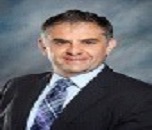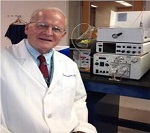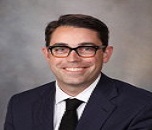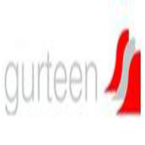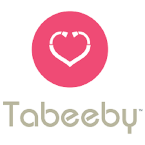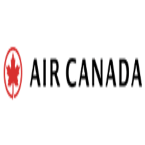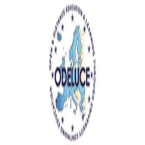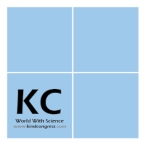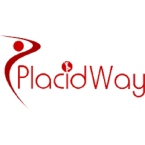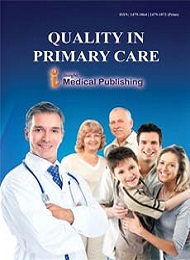Theme: Exploring new challenges for Better Healthcare
Healthcare Informatics 2022
Conference Series LLC Ltd cordially invites attendees from all over the world to attend 18th Annual Congress on Wellness and Healthcare Informatics scheduled on September 27-28 at Berlin, Germany. The conference will run on the theme: A Step towards Better Healthcare System. Healthcare Informatics 2022 creates platforms for health professionals, researchers, scientists, academicians, clinicians and business professionals across the globe to present their latest research, new technologies and enhance their knowledge through mutual interaction and exchange of ideas in different geographical destinations around the world.
Why to Attend?
Conference Series LLC Ltd is set to organize 18th Annual Congress on Wellness and Healthcare Informatics with a view to enhance research and promote awareness aiming in developing solutions for the challenges encountered in Wellness and Healthcare Informatics. Healthcare Informatics 2022 will comprise of leading keynote speakers, session speakers, poster presentations, young research forums and workshops. This is the best opportunity to reach the largest assembling of participants from Medical Health Care field to distribute information, meet with current and potential scientists, and make a splash with new Healthcare Techniques on recent trends.
-
Connect with best professionals
-
Lively Exhibition area filled with the leading industries
-
Collaborations between the industries and academics
-
Interactive panel discussions and Q&A sessions
-
Discuss recent trends in Wellness & Healthcare
-
World-class platform to Exhibit your products, services, innovations & ideas
-
To have great interactions with the experts around the world
Target Audience:
-
Chief Marketing Officers of Healthcare & technology Product & Service providers
-
Chief Technology Officers
-
Vice Presidents of Marketing & Marketing Communications Directors
-
Chief Information Officers
-
Chief of Medical Records
-
Marketing & Communications Directors
-
CRM Managers and Data Analysts
-
Information Systems Directors/Managers
-
Medical/Clinical Informatics Directors/Managers
-
Web Directors, Webmasters and Web Team Members
-
Public Relations Directors
-
Business Development Executives
-
Physician Relations Directors
-
Strategic Planners
-
Chief Nursing Officers
-
Chief Information Security Officers
-
Chief Privacy Officers
-
Legal, compliance, and quality directors and managers
-
Analysts, consultants, attorneys, and others connected to Healthcare & Technology security issues
-
Director/Manager Nursing Informatics Directors/Managers
-
Medical Records and HIM Directors/Managers
-
Physicians and Clinicians
Euro Health Product developers, service/solution Providers in:
-
health/ Remote – Monitoring/ Wireless
-
Telemedicine
-
System integration
-
HIS/CIS/EMR/PACS
-
Data Centres (Infrastructure and Transformation)
-
Mobile Apps
-
Enterprise mobility
-
Cloud
-
Artificial Intelligence
Other decisions makers in the Healthcare sectors but not limited to:
-
Healthcare Policy Makers/ Researchers/ Healthcare Service Providers
-
Medical Insurance & Medical Tourism Companies
-
Medical Equipment/healthcare service or product Manufacturers
-
Healthcare Start-Ups and Venture Capitalists
-
Pharm & Biopharma Companies
-
Medical Associations
-
Medical Colleges and Institutions
Track 1: Healthcare Technologies
Healthcare technology keeps on progressing at noteworthy rates. The usage of specific learning in the field of devices, medicines, vaccinations, technique and systems planned to streamline healthcare tasks, lower costs and improve quality of life. Constant technological advancements in human cares have spared incalculable lives and improved the personal satisfaction for considerably more. Not just has innovation changed encounters for patients and their families, but on the other hand it has huge impact on medical procedures and the acts of healthcare professionals.
Track 2: Healthcare and Management
Healthcare Management has gigantic interest nowadays as it truly helps in dealing with an emergency clinic or a medical office. The extent of Healthcare Management frameworks is expanding by every day and it is valid for the whole world. Healthcare Management solutions are more than one factor that adds to the expanding request in the healthcare division. Some of these solutions incorporate improved mindfulness about Healthcare Management services, wellbeing approaches and upgrade in the interest for world class health care facilities in Hospital management. In a regularly evolving world, Healthcare management is essential to compete in the industry in providing better care to patients.
Track 3: Healthcare and Innovation
Healthcare and Innovation has been leaving its impressions on each turf, healthcare is a standout amongst the most positively influenced areas New advancements in innovation have helped in shaping the healthcare services industry in the correct manner. From research and medicines to information gathering, advancement has prepared for such extraordinary changes in the healthcare industry. Changing patterns in the technological world have improved the nature of healthcare services that people receive in a significant manner.
Track 4: Mental Health and Mental Disorders
Mental disorders are among the most common causes of disability. The resulting disease burden of mental illness is among the highest of all diseases. In any given year, an estimated 18.1% (43.6 million) of U.S. adults ages 18 years or older suffered from any mental illness and 4.2% (9.8 million) suffered from a seriously debilitating mental illness. Neuropsychiatric disorders are the leading cause of disability in the United States, accounting for 18.7% of all years of life lost to disability and premature mortality. Moreover, suicide is the 10th leading cause of death in the United States, accounting for the deaths of approximately 43,000 Americans in 2014.
Track 5: Digital Healthcare
Digital health, which includes digital care programs, is the convergence of digital technologies with health, healthcare, living, and society to enhance the efficiency of healthcare delivery to make medicine more personalized and precise. The discipline uses information and communication technologies to facilitate understanding of health problems and challenges faced by people receiving medical treatment.
Track 6: Healthcare and Nursing
The practice of nursing is guided by standards and definitions established by leaders of nursing in professional associations and to some extent by governmental agencies such as the Public Health Service's Bureau of Health Professions. Systematic frameworks for the practice of nursing also guide nurses in actual nursing performance. The most widely accepted framework for nursing practice currently in use is the nursing process of assessment, diagnosis, planning, intervention, and evaluation. A model to guide medical and nursing practice specific to environmental health concerns established by the California Public Health Foundation consists of three roles: investigator, educator, and advocate.
Track 7: Maternal, Infant, and Child Health
Improving the well-being of mother’s infants and children is an important public health goal for the United States. Their well-being determines the health of the next generation and can help predict future public health challenges for families, communities and the health care system. The objectives of the Maternal Infant and Child Health topic area address a wide range of conditions, health behaviours, and health systems indicators that affect the health, wellness, and quality of life of women, children, and families. Pregnancy can provide an opportunity to identify existing health risks in women and to prevent future health problems for women and their children.
Track 8: Biomedical & Health Informatics
Biomedical and health informatics applies principles of computer and information science to the advancement of life sciences research, health professions education, public health, and patient care. This multidisciplinary and integrative field focuses on Health Information Technologies and involves the computer, cognitive, and social sciences Informatics is the science of how to use data, information and knowledge to improve human health and the delivery of health care services. Biomedical and health informatics has built up its own zones of accentuation and methodologies that separates it from different callings and controls Biomedical Informatics (BMI) is the interdisciplinary, logical field that reviews and seeks after the compelling employments of biomedical information, data, and learning for logical request, critical thinking and basic leadership, roused by endeavours to improve human health.
Track 9: Dental Informatics
Dental Informatics is a specialization within Health Informatics, a multi-disciplinary field that seeks to improve health care through the application of Health Information Technology and information science to health care delivery. This is a growing area of interest within the profession, both in academic circles and among practicing dentists more and more dental schools and dental practices are implementing Electronic Health Records systems and Health Information Exchanges are beginning a transformation in health care communications. The demands of federal and state programs to promote EHR adoption among certain health care providers are also beginning to affect dentists across the country. As a result of these changes, dentistry is engaging information technology to meet its clinical administrative research and educational needs more than ever.
Track 10: Electronic Health Record
Electronic health record is a digital version of a patient’s paper chart. EHRs are real-time, patient-centred records that make information available instantly and securely to authorized users. One of the key features of an Electronic Health Record is that health information can be created and managed by authorized providers in a digital format capable of being shared with other providers across more than one health care organization. Electronic Health Record are built to share information with other health care providers and organizations such as laboratories, specialists, medical imaging facilities, pharmacies, emergency facilities, and school and workplace clinics so they contain information from all clinicians involved in a patient’s care.
Track 11: E-Prescription
Prescriptions may be entered into an electronic medical record system and transmitted electronically to a pharmacy. Alternatively, a prescription may be handwritten on pre-printed prescription forms that have been assembled into pads, or printed onto similar forms using a computer printer or even on plain paper according to the circumstance. In some cases, a prescription may be transmitted from the physician to the pharmacist orally by telephone; this practice may increase the risk of medical error. The content of a prescription includes the name and address of the prescribing provider and any other legal requirement such as a registration number. Unique for each prescription is the name of the patient.
Track 12: Healthcare planning and Marketing
healthcare marketing plan is a vision-driven, strategic detailed document that’s meant to help facilitate the accomplishment of specific healthcare business objectives, mission, and goals over a given period of time. If you’re not a newbie to the world of healthcare marketing, the chances are that you’re familiar with a SWOT Analysis (an acronym for Strengths, Weaknesses, Opportunities, and Threats). It’s a tried-and-tested approach that has been used for decades to create actionable marketing plans. However, in the digital age of instant-everything, healthcare marketers and planners have to do more than SWOT analysis to succeed.
Track 13: Medical Tourism
Medical tourism can be defined as the process of traveling outside the country of residence for the purpose of receiving medical care. Growth in the popularity of Medical tourism has captured the attention of policy-makers, researchers and the media. Originally, the term referred to the travel of patients from less-developed countries to developed nations in pursuit of the treatments not available in their homeland. Today we are experiencing both qualitative and quantitative shifts in patient mobility, as people travel from richer to less-developed countries in order to access health services. Such shift is mostly driven by the relative low-cost of treatments in less developed nations, the availability of inexpensive flights and increased marketing and online consumer information about the availability of medical services.
Track 14: Healthcare and Infectious Diseases
Health Care-associated Infections (HAIs) are contaminations individuals get while they are accepting health care for another condition. Healthcare and Infectious Diseases can occur in any health care facility, including medical clinics, mobile careful focuses, end-organize renal malady offices, and long term care offices. Healthcare and Infectious Diseases can be brought about by microscopic organisms, parasites, infections, or other, less basic pathogens. Healthcare and Infectious Diseases are a critical reason for disease and demise and they can have pulverizing enthusiastic, financial, and therapeutic results. At some random time, around 1 of every 25 inpatients has a contamination identified with clinic care.
Track 15: Artificial Intelligence in Healthcare
Artificial Intelligence (AI) expects to impersonate human intellectual capacities. It is conveying a change in outlook to medicinal services, controlled by expanding accessibility of human services information and quick advancement of investigation procedures. Prominent AI strategies incorporate Artificial Intelligence techniques for organized information, for example, the established help vector machine and neural system, and the cutting edge profound learning, just as regular language preparing for unstructured information. Real malady regions that utilization Artificial Intelligence devices incorporate cancer, neurology and cardiology. We at that point audit in more subtleties the Artificial Intelligence applications in stroke, in the three noteworthy territories of early location and analysis, treatment, just as result forecast and prognosis assessment.
Track 16: Epidemiology and Public Health
Epidemiology is the study of disease occurrence and transmission in a human population, epidemiological studies focus on the distribution and determinants of disease. Epidemiology may also be considered the method of public health—a scientific approach to studying disease and health problems. Epidemiology consists of research methods and specific strategies for counting and calculating the occurrence and risk of disease. Public health promotes and protects the health of people and the communities where they live, learn, work and play. The approach to medicine that is concerned with the health of the community as a whole. Public health is community health. It has been said that: "Health care is vital to all of us some of the time, but public health is vital to all of us all of the time".
Track 17: Women’s Health and Complications
While both men and women contract various conditions, some health issues affect women differently and more commonly. Furthermore, many women’s health conditions go undiagnosed and most drug trials do not include female test subjects. Even so, women bear exclusive health concerns, such as breast cancer, cervical cancer, menopause, and pregnancy. Women suffer higher heart attack deaths compared to men. Depression and anxiety exhibit more frequently among female patients. Urinary tract conditions present more often in females, and sexually transmitted diseases can cause more harm to women.
Track 18: Health Informatics
Health informatics is the intersection purpose of Information Technology, Information science with Public health and Health care. It oversees resources, devices, methods and foundations required to improve the getting, storing, recuperation, and use of information in general health and health care. The field of health care informatics is a growing one, as the medical network is beginning to complete Information Technology in its record keeping and arranging practices. This imaginative calling utilizes IT and information the data the board methodologies to streamline the sharing and taking care of data among medicinal systems.
Track 19: Pharmacy Informatics
Pharmacy informatics is taking the healthcare informatics field to another measurement by making the demonstration of suggesting and managing solutions continuously definite. Drawing on both medical knowledge and computer science, this field uses information advancement answers for improve calm outcomes. It is the legitimate field that bases on medication related data and learning inside the continuum of human services frameworks - including its obtainment, amassing, examination, use and dispersal - in the conveyance of ideal drug related patient care and health results.
Track 20: Hospital Management
Hospital Management is a term exceptionally expansive in scope and might be characterized from various viewpoints. It fundamentally identifies with the executives of all parts of a medical clinic; a coordination of all components of an emergency clinic. This may go from patient thought to record keeping to supply of medications and neatness. To become a hospital management professional managing each and every component of the medical clinic.
Track 21: Personalized Medicine
Personalized medicine has the possibly tailor treatment with the best reaction and most noteworthy security edge to guarantee better patient consideration. By enabling each patient to receive earlier diagnoses, risk assessments, and optimal treatments, Personalized Medicine holds promise for improving health care while also lowering costs New value assessments for Personalized Medicine products, along with return-on-investment (ROI) models, will also be required as these new strategies for pharmaceutical and diagnostic products emerge to develop agents that are targeted to patient groups that try not to react to drugs as planned and for whom the traditional health frameworks have otherwise failed.
Track 22: Telehealth and Medicine Today
Telehealth is defined as the delivery and facilitation of health and health-related services including medical care, provider and patient education, health information services, and self-care via telecommunications and digital communication technologies. Live video conferencing, mobile health apps, “store and forward” electronic transmission, and remote patient monitoring (RPM) are examples of technologies used in telehealth.
"18th Annual Congress on Wellness & Healthcare Informatics" which will occur on September 28-29, 2022 Berlin, Germany facilitated by Conference Series. The meeting will unite Medical Informatics Researchers and specialists from in excess of 40 countries to share their insight, experience, and mastery through a progression of Key Notes, Plenary Talks, Workshops, Symposiums and Exhibitions. The subject of this current year gathering is "Inventive data advancements for the change of patient consideration" and the group of onlookers are normal from wide trains which incorporates however not restricted to Health and Medical Informaticians, Telemedicine Experts, Academic Researchers, Nurses, Biostatisticians and different specialists working in the related territory of Medical Informatics and Telemedicine to share their involvement with the worldwide stage for the prosperity of patients.
Today’s Market Study of Medical informatics in USA | Europe | Middle East | Asia Pacific:
USA: Medical informatics has an exponential development rate and World Health Organization (WHO) appraises that the informatics is probably going to achieve 366 million of every 2030. The United States is relied upon to have an expansion of 102 for every penny in the diabetic plague in 2030 when contrasted with 2000
Europe: The European Union's Member States are focused on sharing their prescribed procedures and encounters to make a European health Area, accordingly enhancing access to and quality social insurance in the meantime as fortifying development in a promising new modern division. The European Health Action Plan assumes a principal job in the European Union's technique. Work on this activity includes a community oriented methodology among a few sections of the Commission administrations. The European Institute for Health Records is engaged with the advancement of superb electronic health record frameworks in the European Union.
Center East: The rate of therapeutic informatics in parts of the Arabian Peninsula is over double the worldwide normal rate, and substantially higher than some different regions of the Middle East and North Africa (MENA). Furthermore, instances of medicinal informatics out number is most causely around 10:1 proportion .
Asia Pacific: The Asia-Pacific therapeutic informatics Market has been evaluated at USD 2.461 Billion of every 2015 and is anticipated to achieve USD 3.518 billion by 2020, at a CAGR of 7.41% amid the conjecture time frame from 2015 to 2020.
For more details please visit : https://healthcareinformatics.annualcongress.com/
DISCLAIMER:
The data created in this report is proposed just to understand the extent of facilitating related universal gatherings at the separate areas. This data does not establish administrative, lawful or bookkeeping exhortation, nor should it be considered as a corporate approach direct, research centre manual or a support of any item, as a great part of the data is theoretical in nature. Gathering Organizers assume no liability for any misfortune or harm that may result from dependence on the revealed data or from its utilization.
Conference Series LLC Ltd proudly announces the successful completion of 17th Annual Congress on Wellness and Healthcare Informatics (Euro Health 2020) held during March 10-11, 2019 in Abu Dhabi, Dubai with the support and contribution from the esteemed Organizing Committee Members, Speakers, Delegates, Media Partners and other supporters.
Firstly, we are thankful to you for trusting us and a part of the Euro Health 2020, a global platform to discuss various important aspects of Healthcare and Information Technology. There are infinite reasons to extend our gratitude to all our supporters for making the Euro Health 2020 a great conference. We couldn't have done it without your continuous support and believe towards our organization, which mutually made to achieve Euro Health 2019 a new height in the field of healthcare and technology.
The conference was manifest with the presence of global experts both from academia and industries, young and brilliant researchers, business & academic delegates and student communities from more than 25 countries, who have driven this conference into the path of success.
Healthcare Informatics 2022 was based on the theme “A Step towards Better Healthcare System”. The event rooted a firm relation of upcoming strategies in the field of Healthcare and technology with the medical community and promoted many collaborated research activities. The conference witnessed an amalgamation of peerless speakers, Keynote/plenary speakers, well-known researchers and delegates who enlightened the crowd with their enviable research knowledge and on various alluring topics related to the field of healthcare & technology through their fabulous presentations at the platform of Euro Health 2020.
Conference Series LLC Ltd. offers its heartfelt gratitude and appreciation to all the Organizing Committee Members, Keynote Speakers, Chairs and Co-chairs, Speakers, Students, Media Partners and Editorial Board Members of Health Care: Current Reviews, Journal of Health & Medical Informatics, and Journal of Healthcare Communications who supported the conference in every aspect for the awe-inspiring exhibition at the venue.
A Special thanks to the Organizing Committee Members of Euro Health 2020, Keynote Speakers, Speakers, Chairs and Co-chairs without whom it might have a very difficult scenario for us to deliver the amazing conference.
The conference proceedings were carried out through various Scientific-sessions and plenary lectures, of which the following Speakers were highlighted as Keynote speakers:
-
Tammy Guns, Can Corp Consulting, USA
-
Rebecca McKenzie & Rudi Dallos, The University of Plymouth, UK
-
Pier Antonio Russo, HVH Precision Analytics, USA
-
Mohd. Abul Kalam Azad, Milk Vita, Bangladesh
Special Thanks to HVH Precision Analytics for exhibiting and sponsorship.
So as continuation of Euro Health 2020, we would like to heartily welcome you to our upcoming 18th Annual Congress on Wellness & Healthcare Informatics, September 27-28, 2022 for our conference. We look forward to seeing your benign presence with active contribution and support to make this upcoming HEALTHCARE INFORMATICS 2022 Conference a huge success.
Conference Highlights
- Healthcare Technologies
- Healthcare and Management
- Healthcare and Innovation
- Mental Health and Mental Disorders
- Digital Healthcare
- Healthcare and Nursing
- Maternal, Infant, and Child Health
- Biomedical & Health Informatics
- Dental Informatics
- Electronic Health Record
- E-Prescription
- Healthcare planning and Marketing
- Medical Tourism
- Healthcare and Infectious Diseases
- Artificial Intelligence in Healthcare
- Epidemiology and Public Health
- Women’s Health and Complications
- Health Informatics
- Pharmacy Informatics
- Hospital Management
- Personalized Medicine
- Telehealth and Medicine Today
To share your views and research, please click here to register for the Conference.
To Collaborate Scientific Professionals around the World
| Conference Date | September 27-28, 2022 | ||
| Sponsors & Exhibitors |
|
||
| Speaker Opportunity Closed | |||
| Poster Opportunity Closed | Click Here to View | ||
Useful Links
Special Issues
All accepted abstracts will be published in respective Our International Journals.
- Quality in Primary Care
- Journal of Community Medicine & Health Education
- Diversity & Equality in Health and Care
Abstracts will be provided with Digital Object Identifier by




